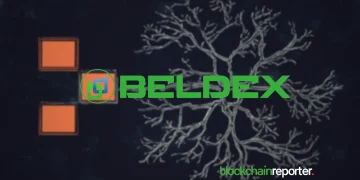Despite rising uncertainties around Polygon’s MATIC coin, its investors have reasons to remain optimistic. The cryptocurrency gained momentum following the revelation of Polygon 2.0, an upgrade aimed at boosting decentralization within the ecosystem. MATIC is transitioning to a new cryptocurrency, POL, which officially made its debut on the Ethereum mainnet on October 25 last year. To accommodate this change, MATIC owners are afforded the opportunity to exchange their tokens for POL on an equal basis. This development surfaced shortly after the SEC raised concerns, suggesting that MATIC might be operating as an unregistered security in the U.S. Polygon (MATIC), a critical element in enhancing Ethereum’s scalability, has been at the top of Ethereum’s scaling efforts. It achieves this by facilitating transactions off the main chain and utilizing batch proofs to link back to Ethereum, thereby creating a more efficient environment for DeFi, NFTs, and Web3 applications. This approach addresses key issues such as network fragmentation and liquidity challenges, propelling Polygon into its next evolutionary stage, Polygon 2.0. Originally launched as Matic Network in 2017, Polygon has been a pioneer in layer 2 solutions, developing side chains that parallel Ethereum to improve transaction speeds through off-chain computation. In this article, we’ll explore MATIC price with in-depth technical analysis and identify key levels to determine its upcoming price trend. Additionally, we’ll explore MATIC’s future price potential from Polygon price prediction.
Polygon: A Quick Overview
Originally launched as Matic Network, Polygon is touted as the pioneering platform designed to alleviate congestion issues on the Ethereum (ETH) blockchain, in addition to focusing on infrastructure development. It was established in 2017 by ex-Ethereum contributors Jaynti Kanani, Sandeep Nailwal, Anurag Arjun, and Mihailo Bjelic, with the ambition to develop a comprehensive multi-chain system.
Over recent years, Ether (ETH) has ascended to become the second-largest cryptocurrency by market capitalization and a frontrunner in decentralized finance (DeFi), largely thanks to its support for smart contracts. These are automated contracts that execute when predefined conditions are met, simplifying the creation of decentralized applications (dApps).
Nonetheless, ETH’s surging popularity has paradoxically made the Ethereum blockchain more challenging to use, due to escalating transaction fees and increased network congestion. This situation prompted the development of Matic.
Matic introduced Plasma technology, facilitating transactions off the main Ethereum chain before finalizing them on the main chain, enabling faster transaction speeds without sacrificing the ability to use dApps or the broader Ethereum ecosystem. This approach, known as a layer-2 solution, aimed not to overhaul the foundational blockchain layer but to allow operations beyond it.
In 2021, Matic transitioned to Polygon, signifying not just a rebranding but also a shift in operational dynamics. The revamped platform strived for a genuinely interoperable network of mini-blockchains or sidechains, thereby broadening the scope of blockchain interoperability.
This transformation can be likened to an advanced layer-2 scaling solution, reflecting the original vision of its founders for evolving Matic into Polygon.
It’s important to highlight that on September 15, 2022, Ethereum transitioned to a proof-of-stake (PoS) consensus mechanism, a move anticipated to enhance network performance. The long-term implications of this development on platforms like Polygon are yet to be completely understood.
Like all blockchain networks, Polygon features its native cryptocurrency, known as the polygon coin, with the ticker symbol MATIC. This token is utilized within the Polygon network for transaction fees, staking, and governance purposes.
MATIC: Working Module & Latest Updates
Polygon employs an adapted proof-of-stake (PoS) consensus mechanism, which allows for consensus to be reached with the addition of each block, unlike the traditional PoS approach that requires the processing of numerous blocks for consensus. In this system, participants of the network pledge to lock up their MATIC tokens, refraining from trading or selling them, in return for the opportunity to validate transactions on the Polygon network. Validators who successfully verify transactions are compensated with MATIC tokens.
The core structure of the Polygon network includes a primary blockchain that connects to Ethereum and various other blockchains, supported by numerous side chains branching off from it. These side chains are categorized into three types. Zk-Rollups bundle several cryptocurrency transfers into a single transaction, while Plasma Chains group transactions into blocks. Optimistic Rollups function similarly to Plasma Chains but have the added capability to interact with smart contracts, which are computer programs that execute automatically under predefined conditions.
Serving as a layer-2 scaling solution, Polygon seeks to overcome the challenges faced by the Ethereum network, specifically the high costs of transactions and their slow processing times. Polygon offers the capabilities to:
- Launch existing blockchains as well as create tailor-made blockchain networks.
- Facilitate interoperability between Ethereum and other blockchain systems.
- Assist existing blockchains in achieving compatibility with the Ethereum ecosystem.
Polygon vs. Ethereum
Polygon serves as a complementary layer-2 scaling solution that enhances the Ethereum blockchain. It is designed to augment Ethereum’s capabilities as a platform for blockchain development. By offering extra functionalities in terms of security, sovereignty of individual blockchains, user and developer experiences, and modularity, Polygon extends Ethereum’s utility.
Ethereum and Polygon both utilize a revised proof-of-stake (PoS) consensus mechanism, facilitating the rapid and cost-effective processing of transactions. Notably, Ethereum transitioned to a PoS consensus model in 2022, as detailed by Ledger Academy in “Understanding Ethereum’s Proof of Stake Consensus Algorithm.”
Latest Updates
Zero-knowledge (ZK) proofs, a cryptographic method, are central to off-chain processing, allowing verification without exposing data. This is particularly useful in public blockchains. Polygon 2.0 integrates ZK technology to create a network of ZK-powered sidechains, aiming for massive scalability and unified liquidity.
Between mid-June and mid-July 2023, it underwent upgrades improving architecture, tokenomics, and governance. Polygon 2.0 seeks to strengthen its position as Ethereum’s value layer, aiming to facilitate value creation and exchange globally.
However, last week, Polygon disclosed that its zero-knowledge Ethereum Virtual Machine (zkEVM) was temporarily offline because of a problem with the blockchain sequencer. Through a message on X, Polygon informed its audience of two million that this problem was exclusive to the zkEVM and did not affect any other blockchain developed with the Polygon Chain Development Kit (CDK).
MATIC Price Prediction: Price History
Let’s dive into the noteworthy moments of Polygon’s pricing history. While historical performance is not a reliable predictor of future outcomes, understanding the token’s past can provide valuable insights for making or interpreting price forecasts for Polygon.
MATIC debuted on the market in 2019, initially valued at under one cent. It crossed the $0.01 threshold later that year and primarily fluctuated around $0.02 for its initial years. The cryptocurrency surge in 2021, along with MATIC’s rebranding to Polygon, sent it to new heights. It exceeded one dollar in early May and soared above $2 by mid-May. Despite a decrease over the subsequent summer, it recovered in the latter half of the year, reaching a record peak of $2.92 on December 27, 2021.
The following year, 2022, was challenging for Polygon and the broader cryptocurrency market, with its value dropping below $1 in early May. After enduring several market downturns, falling below $0.50 in June, the launch of the zkEVM, an Ethereum Virtual Machine-compatible program, briefly pushed its value over $1 in August. It rose above $1 again in the fall, spurred by news of a collaboration with Meta, formerly known as Facebook, on non-fungible tokens (NFTs). However, the collapse of the FTX exchange marked a significant setback, ending the year at $0.7585, a 70% decrease from its value at the start of the year.
2023 turned out to be a year of ups and downs for Polygon. The cryptocurrency broke through the one-dollar mark in February, but faced a setback when the SEC’s legal actions impacted MATIC’s market value. On June 10, following the announcement that Crypto.com would be halting its institutional services in the United States, its price dropped to $0.5593.
Subsequently, the price of MATIC saw a resurgence. On July 13, buoyed by a judicial decision favoring Ripple’s XRP—declaring it not an unregistered security when traded on exchanges—the price ascended to $0.8775. However, this was followed by a downturn, with the price decreasing to $0.4946 by September 11. Nevertheless, a recovery ensued, and by November 14, the price had climbed to $0.9789.
In recent months, the MATIC price witnessed a robust jump as it broke through the much-anticipated $1 mark following Bitcoin’s record high. Recently, the MATIC price touched the peak of $1.3; however, it has since declined.
Polygon Price Prediction: Technical Analysis
Polygon is encountering resistance along the declining trend line, indicating that bears might be attempting a comeback. However, buyers continue to defend a decline below the $0.9 level. As of writing, MATIC price trades at $0.995, surging over 1.01% in the last 24 hours.
MATIC/USDT Chart On TradingView
Should the price decline and breach the $0.9 support line, this would shift the short-term momentum towards the bears. Consequently, the MATIC/USDT pair might drop to $0.84, and potentially further to the 50-day SMA at $0.7.
To avert a downward trend, bulls need to drive the price beyond the declining trend line. Following this, the pair will strive to surpass the significant resistance at $1.1. Achieving this could initiate a new upward phase towards $1.3.
Polygon Price Prediction By Blockchain Reporter
| Year | Minimum ($) | Average ($) | Maximum ($) |
| 2024 | 1.35 | 1.40 | 1.51 |
| 2025 | 1.92 | 1.97 | 2.36 |
| 2026 | 2.80 | 2.90 | 3.33 |
| 2027 | 4.17 | 4.29 | 4.84 |
| 2028 | 5.78 | 6.00 | 7.15 |
| 2029 | 8.56 | 8.80 | 10.05 |
| 2030 | 12.18 | 12.54 | 14.67 |
| 2031 | 17.36 | 17.86 | 20.95 |
| 2032 | 25.06 | 25.95 | 30.13 |
| 2033 | 37.41 | 38.45 | 43.18 |
Polygon Price Prediction 2024
The price of Polygon is predicted to reach a minimum of $1.35 in 2024. The maximum price could hit $1.51, with an average trading price of $1.40 throughout the year.
| Months | Minimum ($) | Average ($) | Maximum ($) |
| January | 1.35 | 1.37 | 1.36 |
| February | 1.3645 | 1.3818 | 1.3745 |
| March | 1.3791 | 1.3936 | 1.3891 |
| April | 1.3936 | 1.4055 | 1.4036 |
| May | 1.4082 | 1.4173 | 1.4182 |
| June | 1.4227 | 1.4291 | 1.4327 |
| July | 1.4373 | 1.4409 | 1.4473 |
| August | 1.4518 | 1.4527 | 1.4618 |
| September | 1.4664 | 1.4645 | 1.4764 |
| October | 1.4809 | 1.4764 | 1.4909 |
| November | 1.4955 | 1.4882 | 1.5055 |
| December | 1.51 | 1.5 | 1.52 |
Polygon Price Prediction 2025
The minimum expected price of Polygon is $1.92 in 2025, while it could soar to a maximum of $2.36. The average price is anticipated to be $1.97 throughout the year.
| Months | Minimum ($) | Average ($) | Maximum ($) |
| January | 1.92 | 1.94 | 1.93 |
| February | 1.96 | 1.9773 | 1.97 |
| March | 2.00 | 2.0145 | 2.01 |
| April | 2.04 | 2.0518 | 2.05 |
| May | 2.08 | 2.0891 | 2.09 |
| June | 2.12 | 2.1264 | 2.13 |
| July | 2.16 | 2.1636 | 2.17 |
| August | 2.20 | 2.2009 | 2.21 |
| September | 2.24 | 2.2382 | 2.25 |
| October | 2.28 | 2.2755 | 2.29 |
| November | 2.32 | 2.3127 | 2.33 |
| December | 2.36 | 2.35 | 2.37 |
MATIC Price Forecast for 2026
In 2026, Polygon’s price is forecasted to hit a minimum of $2.80. The price could peak at $3.33, with the average price expected to be $2.90.
| Months | Minimum ($) | Average ($) | Maximum ($) |
| January | 2.80 | 2.82 | 2.81 |
| February | 2.8482 | 2.8655 | 2.8582 |
| March | 2.8964 | 2.9109 | 2.9064 |
| April | 2.9445 | 2.9564 | 2.9545 |
| May | 2.9927 | 3.0018 | 3.0027 |
| June | 3.0409 | 3.0473 | 3.0509 |
| July | 3.0891 | 3.0927 | 3.0991 |
| August | 3.1373 | 3.1382 | 3.1473 |
| September | 3.1855 | 3.1836 | 3.1955 |
| October | 3.2336 | 3.2291 | 3.2436 |
| November | 3.2818 | 3.2745 | 3.2918 |
| December | 3.33 | 3.32 | 3.34 |
Polygon (MATIC) Price Prediction 2027
The price of Polygon in 2027 is expected to reach a minimum of $4.17. The maximum price is forecasted to be $4.84, with an average of $4.29.
| Months | Minimum ($) | Average ($) | Maximum ($) |
| January | 4.17 | 4.19 | 4.18 |
| February | 4.2309 | 4.2482 | 4.2409 |
| March | 4.2918 | 4.3064 | 4.3018 |
| April | 4.3527 | 4.3645 | 4.3627 |
| May | 4.4136 | 4.4227 | 4.4236 |
| June | 4.4745 | 4.4809 | 4.4845 |
| July | 4.5355 | 4.5391 | 4.5455 |
| August | 4.5964 | 4.5973 | 4.6064 |
| September | 4.6573 | 4.6555 | 4.6673 |
| October | 4.7182 | 4.7136 | 4.7282 |
| November | 4.7791 | 4.7718 | 4.7891 |
| December | 4.84 | 4.83 | 4.85 |
Polygon Price Prediction 2028
In 2028, the minimum price of Polygon is anticipated to be $5.78. It could reach a maximum of $7.15, with the average trading price around $6.00.
| Months | Minimum ($) | Average ($) | Maximum ($) |
| January | 5.78 | 5.80 | 5.79 |
| February | 5.9045 | 5.9218 | 5.9145 |
| March | 6.0291 | 6.0436 | 6.0391 |
| April | 6.1536 | 6.1655 | 6.1636 |
| May | 6.2782 | 6.2873 | 6.2882 |
| June | 6.4027 | 6.4091 | 6.4127 |
| July | 6.5273 | 6.5309 | 6.5373 |
| August | 6.6518 | 6.6527 | 6.6618 |
| September | 6.7764 | 6.7745 | 6.7864 |
| October | 6.9009 | 6.8964 | 6.9109 |
| November | 7.0255 | 7.0182 | 7.0355 |
| December | 7.15 | 7.14 | 7.16 |
Polygon Price Prediction 2029
The minimum price level for Polygon in 2029 is projected to be $8.56. The maximum price could reach $10.05, with the average forecast price at $8.80.
| Months | Minimum ($) | Average ($) | Maximum ($) |
| January | 8.56 | 8.58 | 8.57 |
| February | 8.6955 | 8.7127 | 8.7055 |
| March | 8.8309 | 8.8455 | 8.8409 |
| April | 8.9664 | 8.9782 | 8.9764 |
| May | 9.1018 | 9.1109 | 9.1118 |
| June | 9.2373 | 9.2436 | 9.2473 |
| July | 9.3727 | 9.3764 | 9.3827 |
| August | 9.5082 | 9.5091 | 9.5182 |
| September | 9.6436 | 9.6418 | 9.6536 |
| October | 9.7791 | 9.7745 | 9.7891 |
| November | 9.9145 | 9.9073 | 9.9245 |
| December | 10.05 | 10.04 | 10.06 |
Polygon (MATIC) Price Prediction 2030
Polygon’s price is predicted to reach a minimum of $12.18 in 2030. The maximum price might hit $14.67, with an average trading price of $12.54 throughout the year.
| Months | Minimum ($) | Average ($) | Maximum ($) |
| January | 12.18 | 12.20 | 12.19 |
| February | 12.4064 | 12.4236 | 12.4164 |
| March | 12.6327 | 12.6473 | 12.6427 |
| April | 12.8591 | 12.8709 | 12.8691 |
| May | 13.0855 | 13.0945 | 13.0955 |
| June | 13.3118 | 13.3182 | 13.3218 |
| July | 13.5382 | 13.5418 | 13.5482 |
| August | 13.7645 | 13.7655 | 13.7745 |
| September | 13.9909 | 13.9891 | 14.0009 |
| October | 14.2173 | 14.2127 | 14.2273 |
| November | 14.4436 | 14.4364 | 14.4536 |
| December | 14.67 | 14.66 | 14.68 |
Polygon Price Forecast 2031
The price of Polygon in 2031 is anticipated to reach a minimum of $17.36. The maximum price could be $20.95, with an average trading price of $17.86.
| Months | Minimum ($) | Average ($) | Maximum ($) |
| January | 17.36 | 17.38 | 17.37 |
| February | 17.6864 | 17.7036 | 17.6964 |
| March | 18.0127 | 18.0273 | 18.0227 |
| April | 18.3391 | 18.3509 | 18.3491 |
| May | 18.6655 | 18.6745 | 18.6755 |
| June | 18.9918 | 18.9982 | 19.0018 |
| July | 19.3182 | 19.3218 | 19.3282 |
| August | 19.6445 | 19.6455 | 19.6545 |
| September | 19.9709 | 19.9691 | 19.9809 |
| October | 20.2973 | 20.2927 | 20.3073 |
| November | 20.6236 | 20.6164 | 20.6336 |
| December | 20.95 | 20.94 | 20.96 |
Polygon (MATIC) Price Prediction 2032
In 2032, the minimum expected price of Polygon is $25.06. It could reach a maximum of $30.13, with the average price forecasted to be $25.95.
| Months | Minimum ($) | Average ($) | Maximum ($) |
| January | 25.06 | 25.08 | 25.07 |
| February | 25.5209 | 25.5382 | 25.5309 |
| March | 25.9818 | 25.9964 | 25.9918 |
| April | 26.4427 | 26.4545 | 26.4527 |
| May | 26.9036 | 26.9127 | 26.9136 |
| June | 27.3645 | 27.3709 | 27.3745 |
| July | 27.8255 | 27.8291 | 27.8355 |
| August | 28.2864 | 28.2873 | 28.2964 |
| September | 28.7473 | 28.7455 | 28.7573 |
| October | 29.2082 | 29.2036 | 29.2182 |
| November | 29.6691 | 29.6618 | 29.6791 |
| December | 30.13 | 30.12 | 30.14 |
Polygon Price Prediction 2033
For 2033, Polygon’s price is forecasted to reach a minimum of $37.41. The maximum price is expected to be $43.18, with an average trading value of $38.45.
| Months | Minimum ($) | Average ($) | Maximum ($) |
| January | 37.41 | 37.43 | 37.42 |
| February | 37.9345 | 37.9518 | 37.9445 |
| March | 38.4591 | 38.4736 | 38.4691 |
| April | 38.9836 | 38.9955 | 38.9936 |
| May | 39.5082 | 39.5173 | 39.5182 |
| June | 40.0327 | 40.0391 | 40.0427 |
| July | 40.5573 | 40.5609 | 40.5673 |
| August | 41.0818 | 41.0827 | 41.0918 |
| September | 41.6064 | 41.6045 | 41.6164 |
| October | 42.1309 | 42.1264 | 42.1409 |
| November | 42.6555 | 42.6482 | 42.6655 |
| December | 43.18 | 43.17 | 43.19 |
MATIC Price Target: By Experts
According to the current Polygon price prediction from Coincodex, the price of Polygon is expected to increase by 7.41% and reach $1.057352 by April 29, 2024. The technical indicators used by Coincodex suggest that the current market sentiment is Neutral, and the Fear & Greed Index indicates a score of 75, which falls into the category of Greed. Over the past 30 days, Polygon has experienced 15 green days out of 30, equating to a 50% rate, with a price volatility of 7.45%.
The forecast from Coincodex suggests that it is presently a favorable time to purchase Polygon. Further, based on historical price movements and BTC halving cycles, Coincodex estimates the lowest Polygon price prediction for 2025 to be $0.984451. Meanwhile, the highest predicted price for Polygon next year is anticipated to reach $3.68.
According to the current Polygon price prediction by Digital Coin Price, the value of Polygon is expected to increase by 222.73%, reaching $3.50 by the end of 2026. Digital Coin Price’s analysis reveals that all technical indicators currently suggest a Bearish sentiment, while the Fear & Greed Index is at 11.48, indicating extreme fear. Based on their forecast, selling Polygon at this time is considered risky. As of March 30, 2024, almost all technical analysis indicators were signaling bullish signals, whereas other indicators were signaling bearish signals, illustrating a generally bearish sentiment among Polygon price predictions.
Is MATIC A Good Investment? When Should You Buy?
Polygon is on a mission to accelerate cryptocurrency adoption, standing out as a leading layer 2 scaling solution. Despite facing setbacks like much of the market in the past year, it remains a major player among altcoins. The future holds considerable promise, much of which hinges on the roll-out of Polygon 2.0.
In the technical documentation or whitepaper, the platform originally named Matic Network, now known as Polygon, highlights that despite the growing interest in blockchain technology, numerous platforms experience slowdowns during peak usage times, leading to increased time and financial costs for users.
It notes that while certain blockchains propose remedies, they often fail to accommodate decentralized applications (dApps), as stated in the documentation.
The whitepaper elaborates: “The Matic Network aims to address the challenges of scalability and user-friendliness without sacrificing decentralization, by building on the existing developer community and ecosystem.”
The introduction of the new POL coin has potential for success, yet there’s a chance that traders might lean towards the more established MATIC instead. Additionally, the outcomes of the latest SEC court cases will be crucial to watch. As always, conducting thorough research is essential.
Conclusion
Polygon (MATIC) serves as both a cryptocurrency and a technological infrastructure, developed with the aim of enhancing and interlinking projects and blockchains compatible with Ethereum. The MATIC token plays a crucial role in governing and safeguarding the Polygon ecosystem, in addition to being utilized for the settlement of transaction charges. Investors interested in acquiring MATIC tokens can do so through various exchanges, including Coinbase and Kraken.
FAQ
What is Polygon (MATIC)?
Polygon, initially known as Matic Network, is a blockchain scalability platform that enhances Ethereum’s scalability by processing transactions off the main chain, using side chains for faster and cheaper transactions.
Why is Polygon important to Ethereum’s ecosystem?
Polygon addresses key challenges of Ethereum such as high gas fees and slow transaction speeds by allowing decentralized applications (dApps) to run on its scalable side chains, thus enhancing the overall efficiency and usability of the Ethereum ecosystem.
How does Polygon (MATIC) work?
Polygon utilizes a modified proof-of-stake (PoS) consensus mechanism and layer-2 side chains to process transactions off the main Ethereum blockchain. This allows for quicker and more cost-effective transactions while maintaining security and interoperability with Ethereum.
Can Polygon (MATIC) price reach $10 in 2024?
While it’s challenging to predict exact future prices, Polygon’s strategic upgrades and growing adoption in the DeFi and NFT space provide a positive outlook. The success of Polygon 2.0 and broader market trends will significantly influence its price potential.
How can investors buy Polygon (MATIC) tokens?
Investors can purchase MATIC tokens on various cryptocurrency exchanges, including Coinbase, Binance, and Kraken, among others. It’s advisable to use reputable exchanges and to store tokens securely in a wallet.























